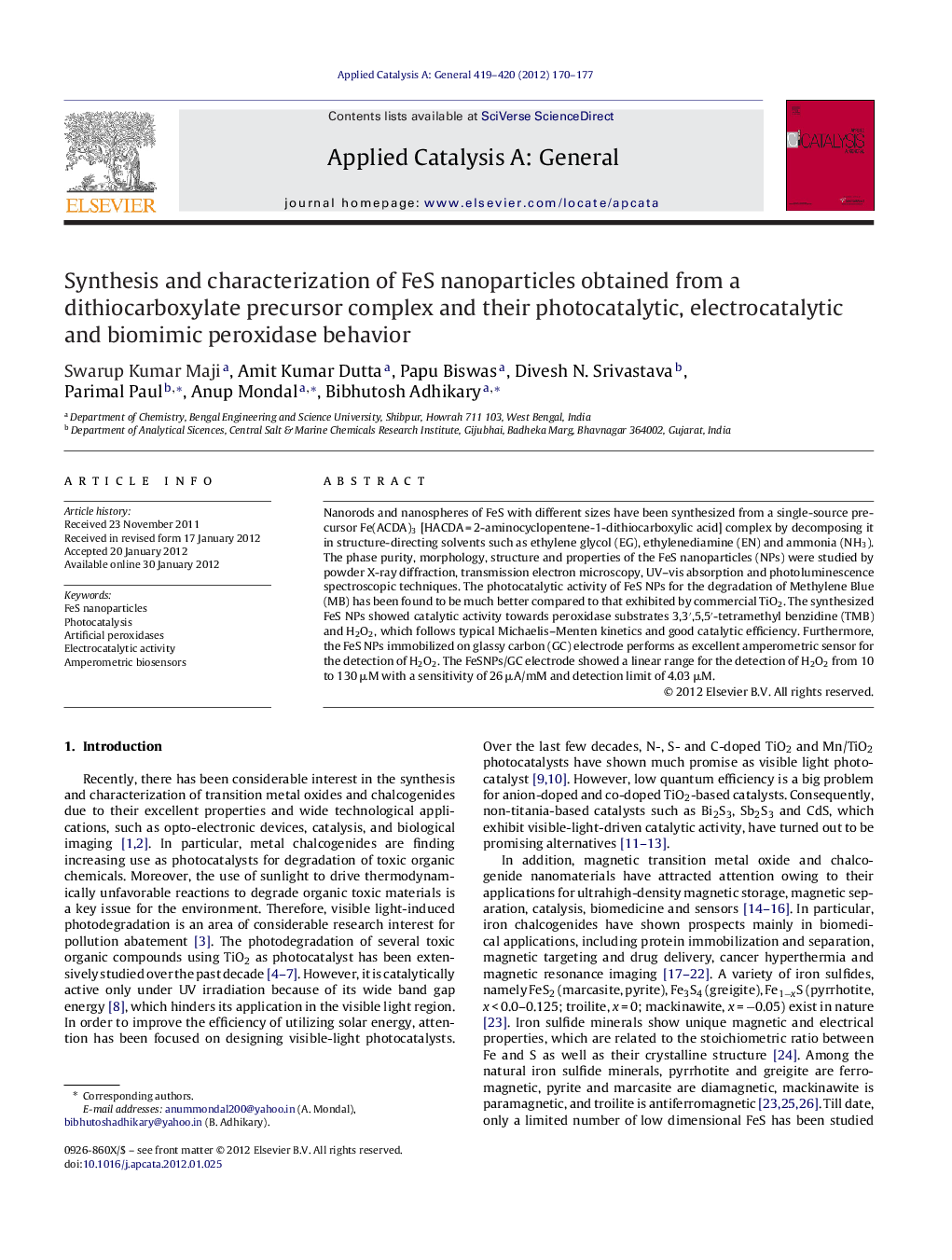| Article ID | Journal | Published Year | Pages | File Type |
|---|---|---|---|---|
| 41040 | Applied Catalysis A: General | 2012 | 8 Pages |
Nanorods and nanospheres of FeS with different sizes have been synthesized from a single-source precursor Fe(ACDA)3 [HACDA = 2-aminocyclopentene-1-dithiocarboxylic acid] complex by decomposing it in structure-directing solvents such as ethylene glycol (EG), ethylenediamine (EN) and ammonia (NH3). The phase purity, morphology, structure and properties of the FeS nanoparticles (NPs) were studied by powder X-ray diffraction, transmission electron microscopy, UV–vis absorption and photoluminescence spectroscopic techniques. The photocatalytic activity of FeS NPs for the degradation of Methylene Blue (MB) has been found to be much better compared to that exhibited by commercial TiO2. The synthesized FeS NPs showed catalytic activity towards peroxidase substrates 3,3′,5,5′-tetramethyl benzidine (TMB) and H2O2, which follows typical Michaelis–Menten kinetics and good catalytic efficiency. Furthermore, the FeS NPs immobilized on glassy carbon (GC) electrode performs as excellent amperometric sensor for the detection of H2O2. The FeSNPs/GC electrode showed a linear range for the detection of H2O2 from 10 to 130 μM with a sensitivity of 26 μA/mM and detection limit of 4.03 μM.
Graphical abstractFigure optionsDownload full-size imageDownload high-quality image (203 K)Download as PowerPoint slideHighlights► FeS NPs by decomposition of a single-source precursor. ► EG, EN and NH3 have been used as structure directing solvents. ► Effective photocatalytic activity towards the decomposition of MB. ► Biomimic peroxidase behavior of FeS NPs. ► FeSNPs/GC electrode performs excellent amperometric sensor for H2O2.
